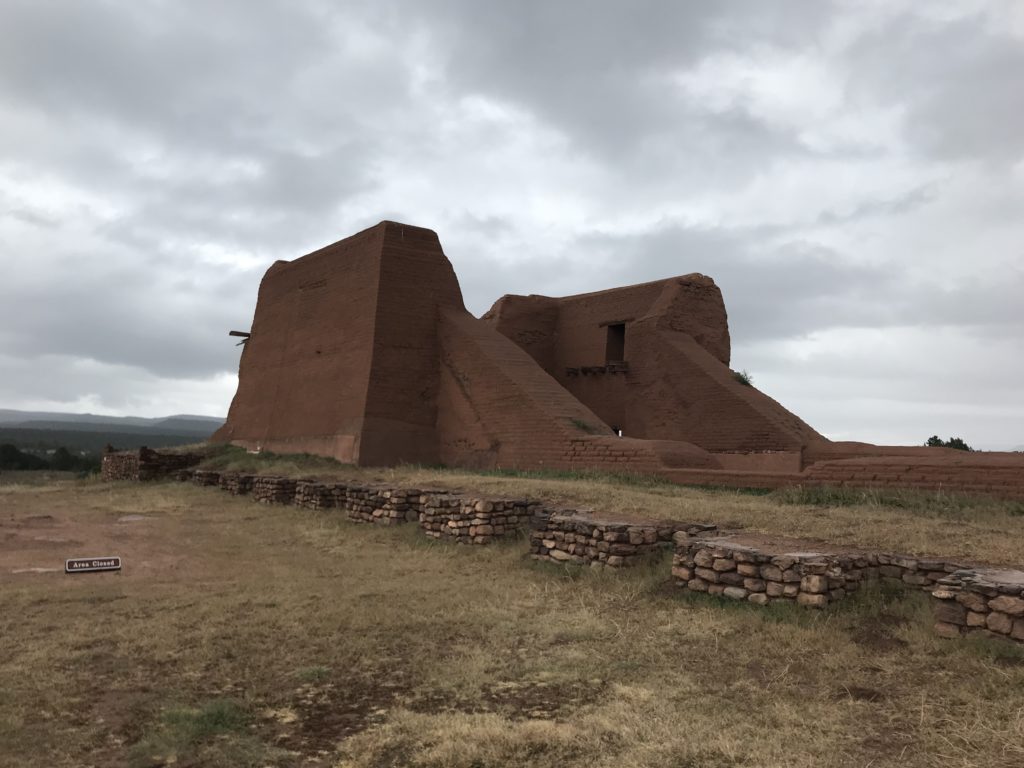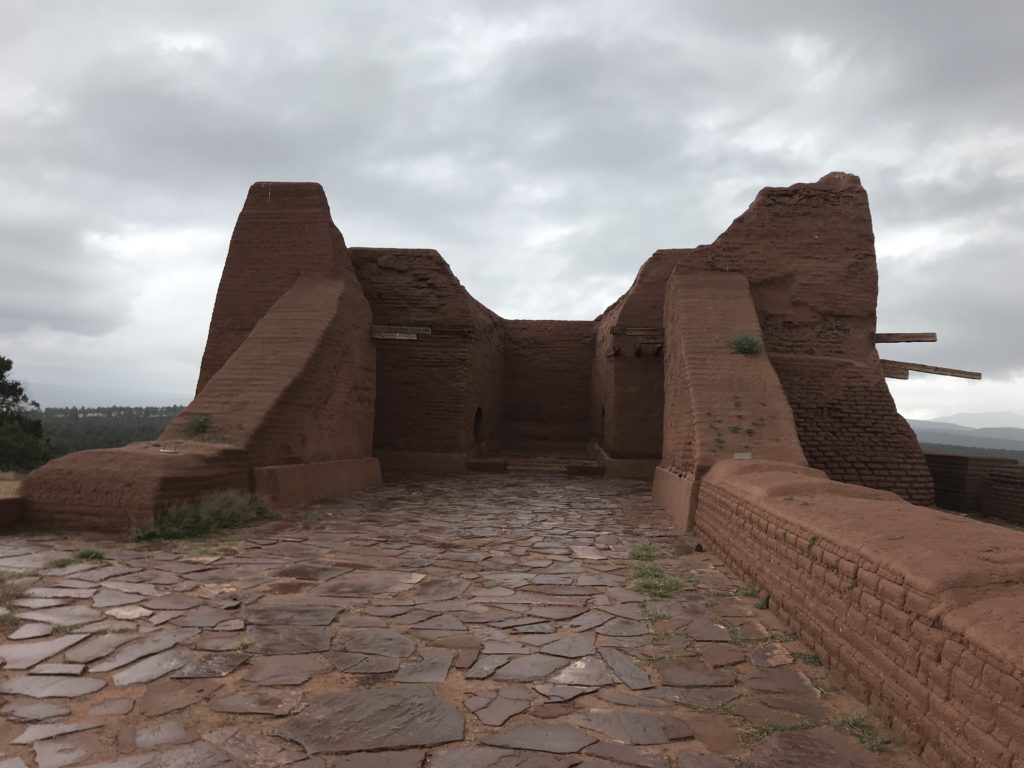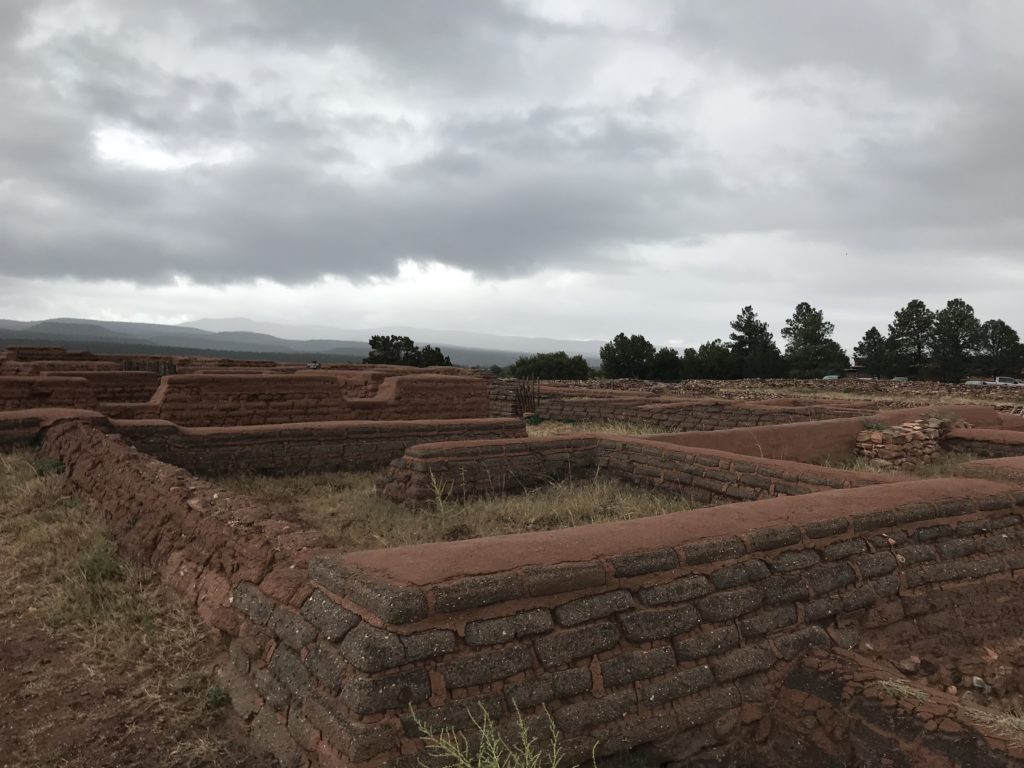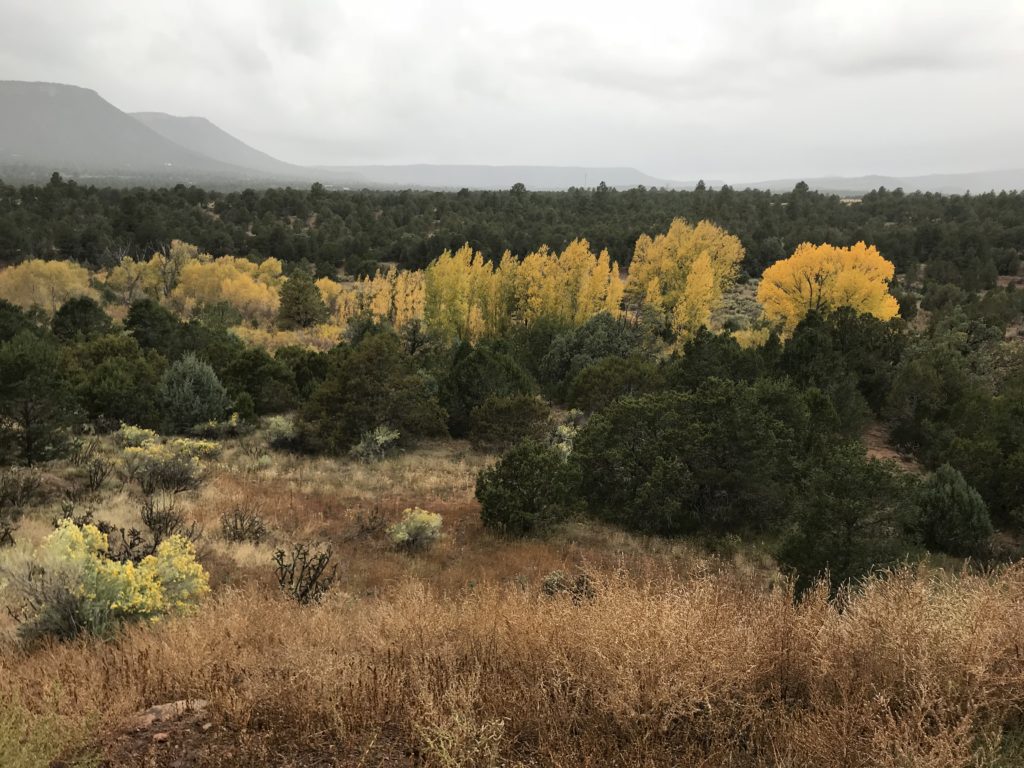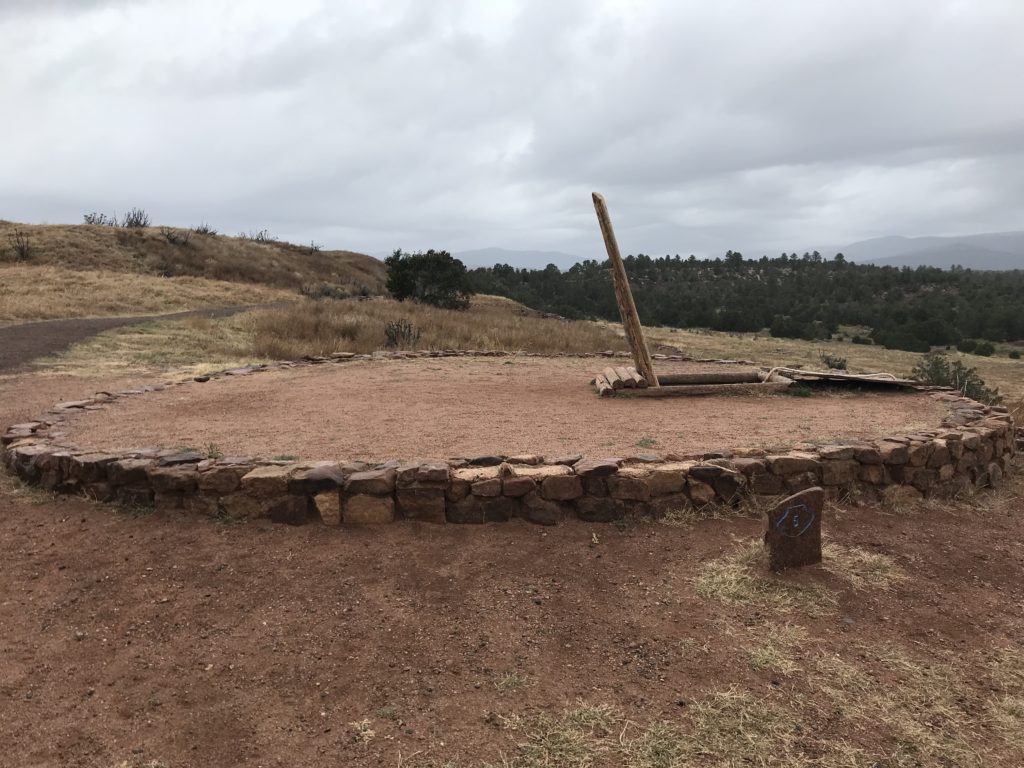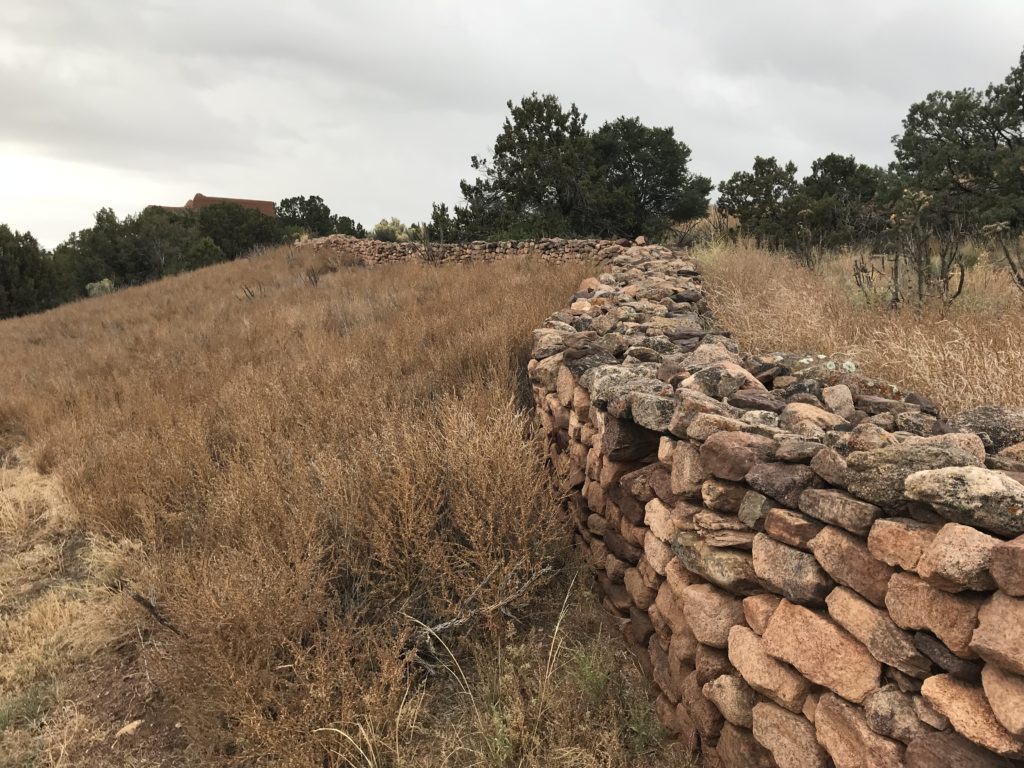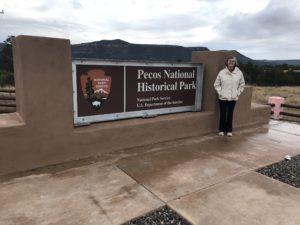 The last National Park Site I want to mention in New Mexico, is Pecos National Historical Park. It was the last site we visited in New Mexico last October. Pecos National Historical Park contains an ancestral Puebloan site. It also has a Civil War battlefield and is part of the Santa Fe Trail. I will write more about the Santa Fe Trail on Wednesday, and will focus on Pecos today.
The last National Park Site I want to mention in New Mexico, is Pecos National Historical Park. It was the last site we visited in New Mexico last October. Pecos National Historical Park contains an ancestral Puebloan site. It also has a Civil War battlefield and is part of the Santa Fe Trail. I will write more about the Santa Fe Trail on Wednesday, and will focus on Pecos today.
Before visiting Pecos National Historical Park, I thought it would be something like Hubbell Trading Post – a place where the cultures of Native Americans and Euro-American met. But it was much more than that.
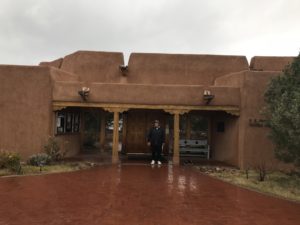
Tom and I visited Pecos National Historical Park on a cold and very wet day. Consequently we explored the Visitors Center and Museum quite a bit before heading outside. We learned from the timeline in the Visitors Center about the various people that had lived and died in this national park.
We started with the ancestral Puebloans, who built a large and intricate pueblo here in the Sangre de Cristo mountains. The Pecos, descended from these Puebloans, built a strong culture at this crossroads between the Plains and the Rio Grande Valley. They controlled who passed through and what goods were traded, so the Pecos were important to the area.
The next group of people to arrive were the Spanish who first came through the area in 1540. The Spanish soon established a mission in Pecos and forced the Natives to build an adobe church in 1619. Many of the Pecos converted to Catholicism and remained on good terms with the Spanish even during the Pueblo Revolt of 1680. Pecos was abandoned by the Natives and the Spanish in 1838 when Comanches began using the pass for raiding.
Glorieta Pass is another part of Pecos National Historical Park and represents a different group of people. Confederate soldiers, attempting to break the Union hold on the Rocky Mountain area, fought the Union soldiers at Glorieta Pass on March 28, 1862. Although the Confederate soldiers won the battle, their supplies were destroyed and they had to retreat to Confederate Arizona and then to Texas. So Glorieta Pass became the most decisive battle of the Civil War in the west.
The final people represented in the park were the ones who established and lived at Forked Lightning Ranch and the adjacent stagecoach stop after the Civil War. Tex Austin established the cattle ranch but soon turned it into a dude ranch for tourists. Greer Garson bought the ranch and donated it to the National Park Service upon her death. Greer also narrated the movie in the Visitors Center.
After learning about the park inside, we headed out into the rain to explore the remains of the pueblo and the mission church. We were surprised they were in such good shape after 400 years! Glorieta Pass and Forked Lightning Ranch are only open for special events at the park so we weren’t able to see them.
Even though we were cold and wet by the time we were done, we enjoyed our visit to Pecos National Historical Park very much. It is located just off I-25 northeast of Santa Fe, so it is a good place to stop and visit if you are going that way.

